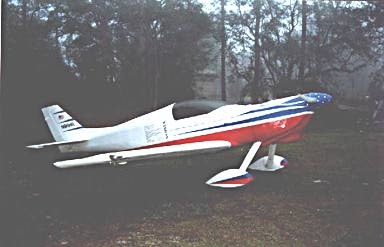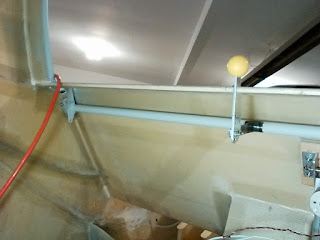December 2 2020
I had bought a canopy latching torque tube from Vans as they use on the RV6 tip up canopy. Some parts I wouldn't be able to use but the method of latching was sound. This torque tube goes just under the seat back and across the fuselage hanging in Nylon blocks at each outer end. The nylon blocks are the ones that came in the kit from Vans and are anchored to the seat back. I had my welder weld on a center arm that has the yellow release knob attached to it with a secondary short metal arm. The knob comes up and forward going into the aft edge of the seat back about 1.5 inches. Only a narrow .25" slot was needed to be cut into the seat back upper horizontal section to allow the knob to come forward. It will have a locking tab installed later as a safety lock for in flight. This was a lot of tricky work and took some time to get all configured. Another detailed drawing of my dimensions was recorded for my future reference.
The outer end of the port tube I had a hex socket welded in place and so my entry key is just a hex key adapted with a 3 inch handle welded onto the short end of the hex key. Remove the hex key and there is only a .25" round hole exposed. Hey loose a key, just get another from the hardware store.
Photo later
The upper canopy will have the mating receivers installed that were part of the Vans canopy latch package. these will be done sometime later.
Photo later

































